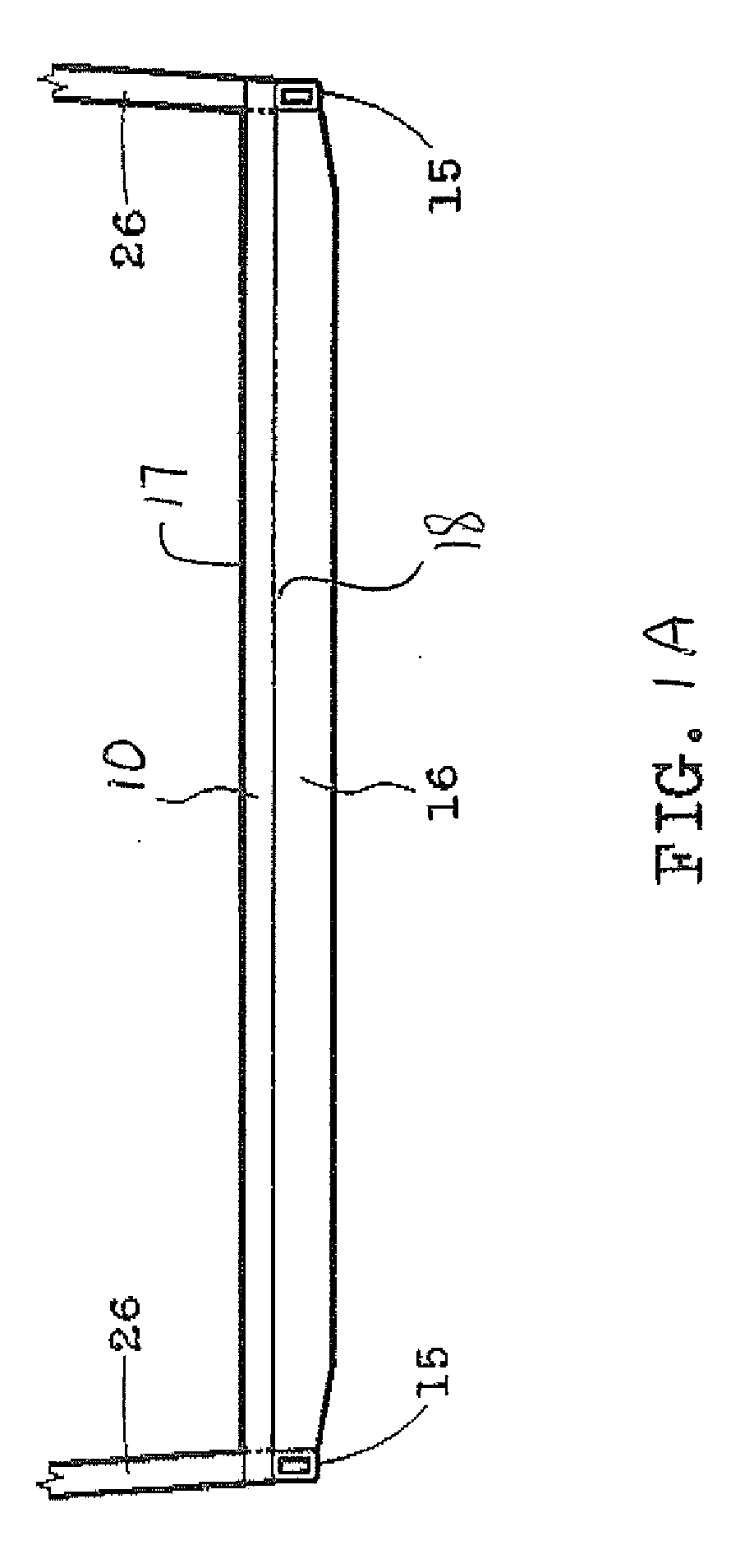Floor panel for a vehicle
- Summary
- Abstract
- Description
- Claims
- Application Information
AI Technical Summary
Benefits of technology
Problems solved by technology
Method used
Image
Examples
first embodiment
[0095]In the first embodiment shown in FIGS. 5, 6 and 7, the face sheet reinforcement 75 is laid down and a first layer 92 of the foam-filled honeycomb core is laid over the reinforcement sheet. The layer 92 is approximately equal to one third of the total core thickness to be encapsulated between the face sheets 75 and 77. This proportion of the total thickness may vary particularly where the total thickness varies as in the complex panel constructions.
[0096]A layer of non-woven polyester veil 97 is laid over the first core sheet 92. The veil 97 is a conventionally available material commonly used in fiber reinforcement structures and acts as an interface between the layers 92 and 91 when it becomes saturated with resin in the infusion process, binding the internal layers together. The second layer 91 which forms an acoustical barrier is laid over the veil 97.
[0097]The layer 91 is again approximately equal to one third of the total core thickness to be encapsulated between the face...
second embodiment
[0103]In the second embodiment, the construction is very similar with three layers as previously described. In this embodiment, the layers 90 and 92 of foam-filled honeycomb core are equal to slightly less than half of the total core thickness to be encapsulated between the face sheets 75 and 77. The layers 97, 97A of non-woven polyester veil are provided as described above. The acoustical barrier 91X is laid over the veil. The layer is roughly 0.06″ (1.5 mm) thick and comprised of non-vulcanized cork which contains as little rubber as possible. The acoustical barrier 91X does not extend to the limits of the panel. A fibrous mat 91Z of required thickness roughly equal to the center layer such as Rovicore™ lofted reinforcement or UPICAMat™ core is placed around the edges of the barrier sheet to fill out the gap between the edges of the sheet and the edges of the part. Another layer of veil is placed over the entire core surface.
[0104]The third or center layers 91 are formed of a homo...
PUM
| Property | Measurement | Unit |
|---|---|---|
| Thickness | aaaaa | aaaaa |
| Density | aaaaa | aaaaa |
| Resilience | aaaaa | aaaaa |
Abstract
Description
Claims
Application Information
 Login to View More
Login to View More - R&D
- Intellectual Property
- Life Sciences
- Materials
- Tech Scout
- Unparalleled Data Quality
- Higher Quality Content
- 60% Fewer Hallucinations
Browse by: Latest US Patents, China's latest patents, Technical Efficacy Thesaurus, Application Domain, Technology Topic, Popular Technical Reports.
© 2025 PatSnap. All rights reserved.Legal|Privacy policy|Modern Slavery Act Transparency Statement|Sitemap|About US| Contact US: help@patsnap.com



